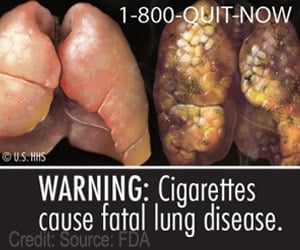Within 10 years of diagnosis, up to 11% of patients with NAFLD/NASH had progressed to advanced liver diseases and up to 27% of patients with NAFLD/NASH and CC had developed liver decompensation, stated study.

‘Within 10 years of diagnosis, up to 11% of patients with NAFLD/NASH had progressed to advanced liver diseases (defined as NAFLD/NASH patients with compensated cirrhosis [CC], decompensated cirrhosis [DCC], liver transplant [LT] or hepatocellular carcinoma [HCC]), and up to 27% of patients with NAFLD/NASH and CC had developed liver decompensation.’





Fatty liver is a complex condition that affects up to one-quarter of adults worldwide. The condition is considered to be the liver manifestation of metabolic syndrome and encompasses a histological spectrum from the relatively benign non-alcoholic fatty liver to NASH, which typically has an aggressive course. NAFLD/NASH can lead to cirrhosis or HCC, and is set to become the predominant cause of liver disease in many parts of the world; however, their natural history remains incompletely defined. In the first study, 215,655 NAFLD/NASH patients were identified retrospectively from a German insurance claims database (InGef; 2011-2016) with 100,644 new events of different liver severity stages identified during the follow-up: 79,245 events (78.7%) of non-progressive NAFLD/NASH, 411 events (0.4%) of CC, 20,614 events (20.5%) of DCC, 11 events (0.01%) of LT and 363 events (0.4%) of HCC. Amongst those with advanced liver diseases, mortality rate during 1 year of follow-up increased by up to 50% (range 8.8-51.2%), compared with non-progressive NAFLD/NASH patients (1.2%, p<0.0001). This trend continued over 5 years of follow-up, with only 2.8% of the non-progressive NAFLD/NASH patients dying, compared with 14.8% of CC patients, 25.6% of DCC patients, and 64.5% of HCC patients. After adjusting for patient demographics and comorbidities, the mortality risk increased significantly (p<.0001) with liver disease progression. As compared to non-progressors, the risk of mortality for NAFLD/NASH patients with CC, DCC, LT and HCC was 2.71, 4.21, 2.23 and 13.69 times higher respectively.
'Perhaps most worryingly, during the 5-year study period, 11% of the NAFLD/NASH patients progressed to advanced liver diseases and 17% of CC patients progressed to DCC, after accounting for any dying patients," said Professor Ali Canbay from the University of Magdeburg Medical School in Magdeburg, Germany, who presented the study findings. 'This demonstrates very clearly the need for early detection and effective treatment to prevent progression and potentially reduce mortality."
In the second study, French investigators identified 125,052 NAFLD/NASH patients from the French National Database on hospital care (PMSI; 2009-2015), of whom 1,491 (1.2%) were diagnosed with CC, 7,846 (6.3%) with DCC, and 1,144 (0.9%) with HCC. As was seen in Germany, a small cohort of patients progressed rapidly, with 5.6% of NAFLD/NASH patients progressing to more severe liver disease during 7 years of follow-up, and 27.5% of NAFLD/NASH patients with CC progressing to DCC. Mortality was high across all cohorts and increased with liver disease progression. After 1 year, 2.1% of NAFLD/NASH patients, 4.6% of CC patients, and 19.1% of DCC patients had died. The corresponding mortality rates after 7 years of follow-up were 7.9%, 16.3%, and 34.6% respectively.
'Before this study, we had very limited data on the disease progression and mortality of NAFLD/NASH patients in our country,' explained Professor Jerome Boursier from Angers University Hospital in Angers, France. 'We were surprised by the high overall mortality rate among these patients (7.9%) - almost twice that of the general population of a similar age - as well as the apparent rate of under-diagnosis of cirrhotic patients, the majority only being identified following a decompensation event.'
Advertisement
Professor Philip Newsome (Vice-Secretary EASL) said, "These data demonstrate the significant morbidity and mortality found in patients with NAFLD and reinforces the need to identify those patients most at risk for appropriate treatment."
Advertisement















